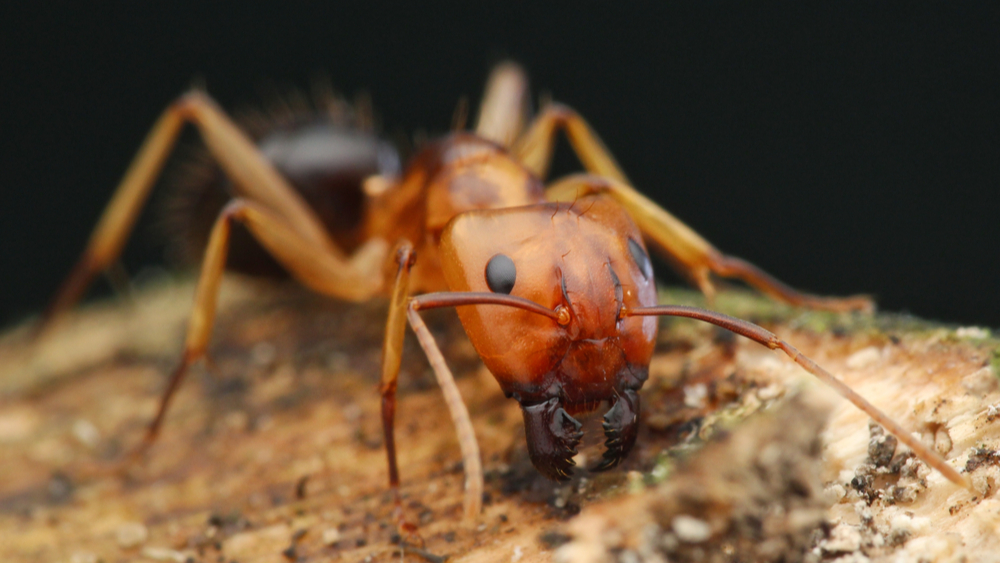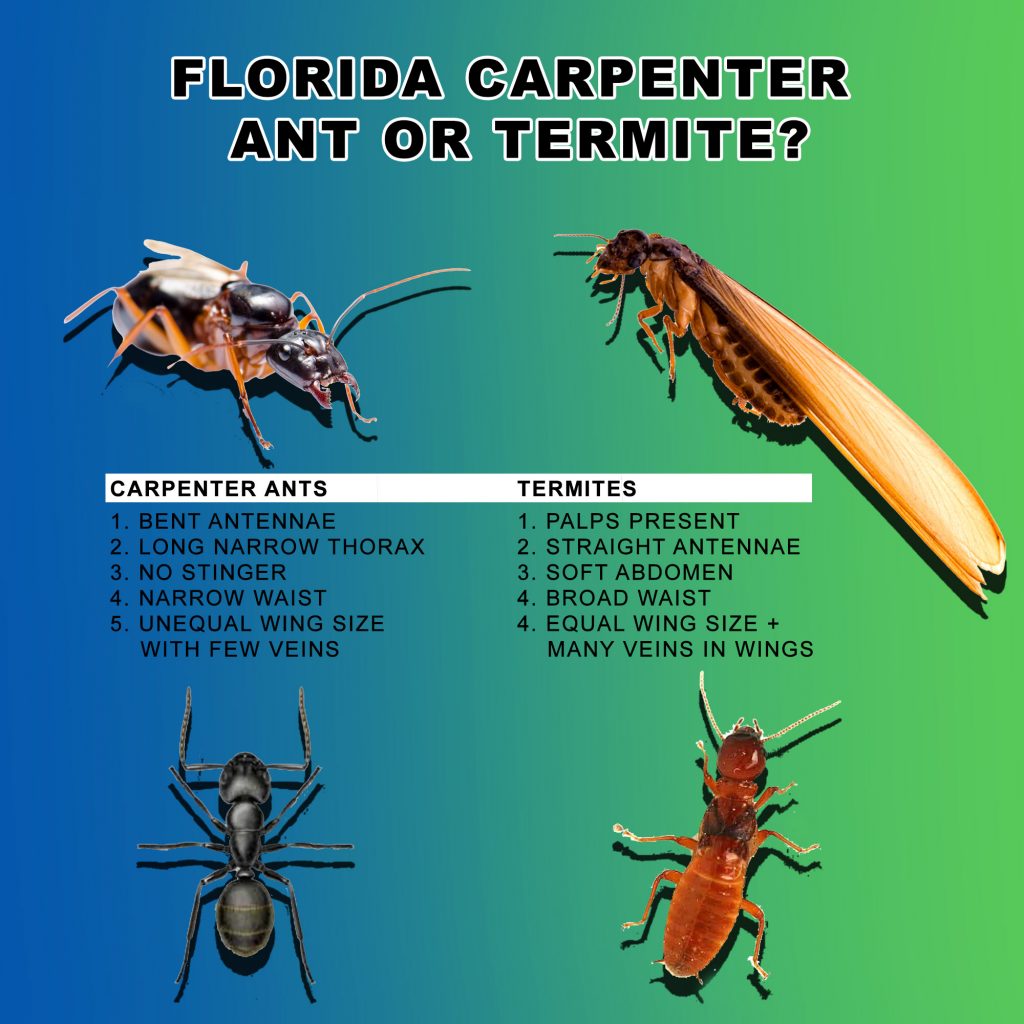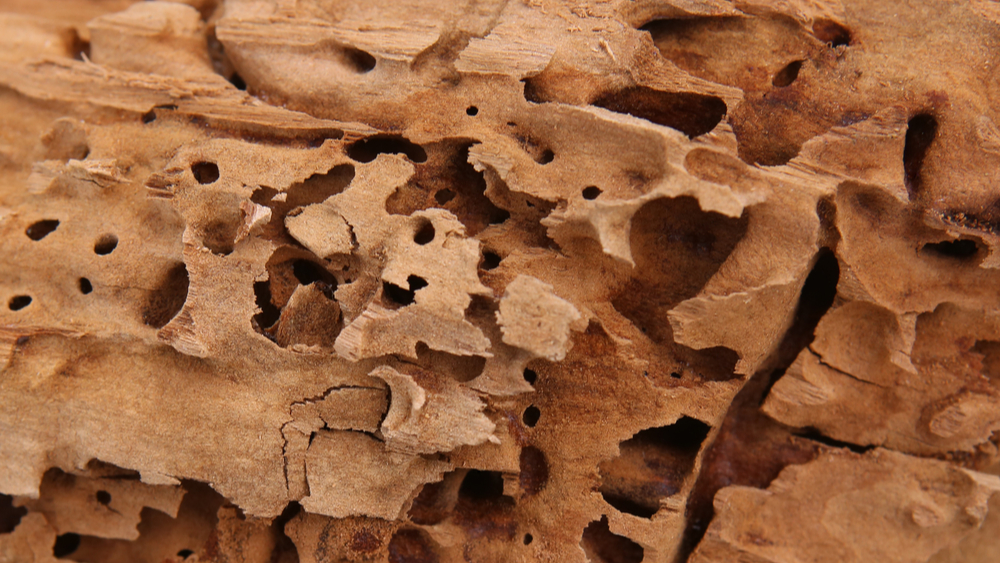
As the weather warms up in South Florida, reports of Florida Carpenter ant sightings increase. The spring swarm season for Carpenter ants in Florida typically runs from April to June, which is when homeowners and businesses can expect to find the ants around window sills and doorways. Swarming Carpenter ants are often mistaken for termites, which swarm about the same time of the year.
While Carpenter ants don’t feed on the wood in the homes and businesses they build nests in, the nests themselves can weaken wood supports, which threatens the structural integrity and can affect the home’s appearance. The ants are definitely not good house guests, feeding on plants, fruit, and food debris and carving out tunnels for traveling to and from their nests.
If you notice Carpenter ant damage in your home, it is essential to get professional help quickly before a small problem turns into a large, expensive one.
Signs of Florida Carpenter Ant Damage
Carpenter ants make their way into homes and establish nests in attics, crawlspaces, and other high-humidity areas. They may follow a trail into and out of the house via wires, cables, or trees adjacent to the structure. The ants tend to forage at night, especially in the hours around sunset and just before dawn.
In addition to plants, fruit, and food debris, Carpenter ants feed on aphids, scales, mealy bugs, and other small insects. Their two favorite things are sweets and moisture, and they spend a great deal of time looking for one or the other. Some additional characteristics include:
- Carpenter ants thrive in areas where there has been a water leak, such as under sinks and showers.
- When they nest, they will hollow out wood that has been softened by moisture or that is otherwise damaged.
- Carpenter ant nests are commonly found in wooden decks and fences, walls, expansion joints, support pillars, and home exterior coverings.
- Inside homes, Carpenter ants nest under bathtubs and appliances, as well as in windows, door frames, and skylights.
Carpenter ants tend to stay behind the scenes, so detecting their presence isn’t always easy. Nevertheless, these are the three telltale signs of Carpenter ants:
- Spotting the workers or swarmers while they’re foraging for food.
- Finding the “frass,” or nesting debris that resembles wood shavings mixed with dead ants.
- Hearing the rustling sound that the ants make as they build their nests by hollowing out rotten wood.

How to Distinguish Florida Carpenter Ants from Termites and Other Insects
Florida Carpenter ants are among the largest ant species. Workers are from a quarter-inch to just under a half-inch in length, and winged females, or alates, are as large as three-quarters of an inch long. Their head and thorax are a rusty brown color and their gaster, or abdomen, is black. Another distinguishing characteristic of Florida Carpenter ants is their abundant body hair and the hair on their legs and antennae.
People often mistake Carpenter ants for termites because of their similar appearance and characteristics, such as swarming in the spring and propensity for damaging wooden structures. One of the best ways to tell Florida Carpenter ants from termites is by looking at the body shape:
- Carpenter ants have a narrow waist that is easy to see, while termites have more rectangular bodies with no narrowing at the center.
- A termite’s antennae are straight and beaded, while the antennae on Carpenter ants are noticeably bent or “elbowed.”
- While both types of flying insects have four wings, the front and back wings on a termite are the same size and shape and much longer than its body, while a swarming Carpenter ant’s wings are about the same size as its body, and its back wings are shorter than its front wings.
- Two-toned Carpenter ants are reddish-brown in front and black in the back, while termites are a light cream color and appear transparent.
Another key difference between the two species is that termites eat the wood in which they build their nests while Carpenter ants dig into wood only to build their nests. Carpenter ants look for moist or damaged wood, while termites attack healthy wood. The tunnels dug by Carpenter ants are smooth, while the galleries dug by termites have a rough appearance and may be filled with soil or mud.

Stopping Florida Carpenter Ants in Their Tracks
One way to prevent Florida Carpenter ant damage in your home or business is by keeping its wood dry and undamaged, which discourages the ants from nesting. Look for leaky pipes and any moisture that collects around wood inside or outside the structure, especially where wood and soil are in contact.
It’s also important to block any potential entry points by sealing cracks and holes in the foundation and walls. Avoid storing food in the open or leaving any traces of food around your house, such as spills or open trash containers.
Getting Started With Nozzle Nolen
If you suspect there may be Carpenter ants inside or outside your home, your first call should be to schedule a free evaluation with the trained pest-control technicians at Nozzle Nolen. Our ant pest control services are designed specifically to eradicate Carpenter ants, fire ants, and other species from homes and businesses in South Florida.
Nozzle Nolen has been keeping South Florida homes and businesses pest-free for more than 70 years. If you have uncovered what you suspect to be Carpenter ant damage, give us a call at 800.226.6536 or Contact Us. We look forward to serving you.




